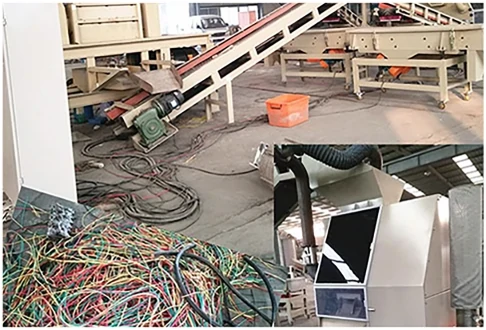Steel scrap recycling plants play a pivotal role in the industrial landscape, driving sustainability and resource efficiency in modern manufacturing. As the global emphasis on environmental stewardship intensifies, the demand for steel scrap recycling solutions continues to surge. For companies venturing into this domain, understanding the full spectrum of operations, challenges, and innovative practices is essential to optimizing both profitability and ecological impact.

Steel scrap recycling plants serve as the backbone of the circular economy in the metal industry. By transforming discarded steel products into new raw materials, these plants not only reduce the necessity for mining but also significantly cut down carbon emissions associated with raw steel production. This enhances the sustainability credentials of the manufacturers involved, thus meeting the increasing consumer and regulatory demand for environmentally friendly practices.
The process within a steel scrap recycling plant involves several key stages, each contributing to the plant’s overall efficiency and effectiveness. Firstly, the collection and sorting of steel scrap are critical. Efficient sorting systems, powered by advanced technologies such as artificial intelligence and machine learning, can distinguish between different types of metals, ensuring that only steel scrap proceeds through the recycling process. This precision minimizes contamination and maximizes recovery rates, directly affecting the plant’s yield and financial performance.

After sorting,
the steel scrap undergoes shredding. State-of-the-art shredding equipment is capable of processing varying sizes of scrap, enhancing the flexibility of operations. Such machinery not only improves material quality but also allows for the recovery of additional components, such as copper and aluminum, adding supplementary revenue streams for the plant.
Melting and refining are the subsequent steps in the recycling process. A successful melting phase requires high-efficiency furnaces that consume less energy, aligning with sustainability goals. Equally important is the refining process, which involves removing impurities to produce high-quality recycled steel. Plants investing in cutting-edge refining technology, such as electromagnetic and dross removal systems, position themselves advantageously in a competitive market by consistently providing superior products.
steel scrap recycling plant
Experience has shown that a commitment to innovation and technology can markedly enhance the operational capabilities of a steel scrap recycling plant. Adopting smart systems for plant monitoring and predictive maintenance ensures minimized downtime and optimized machine performance, leading to higher throughput and greater profitability.
Safety and compliance are other critical aspects of a successful steel scrap recycling operation. Given the potentially hazardous nature of recycling facilities, ensuring stringent health and safety protocols is paramount. Plants must regularly audit their processes to conform to international safety standards – an assurance not only to employees but also to stakeholders looking at the plant’s operational integrity.
For a steel scrap recycling plant to assert its authority and build trust in the market, it is essential to be transparent in operations and engage actively with both local communities and industry watchdogs. Demonstrating corporate social responsibility and actively participating in industry forums solidifies a company’s position as a leader in steel recycling.
In conclusion, steel scrap recycling plants are more than recycling facilities; they are vital components in the promotion of sustainable development. By aligning operations with technological advancements and robust safety measures, these plants can deliver not only significant environmental benefits but also solidify a competitive edge in the market. Companies investing in this sector stand to gain both from a growing market demand and from the increasing legislative push towards sustainability practices.


